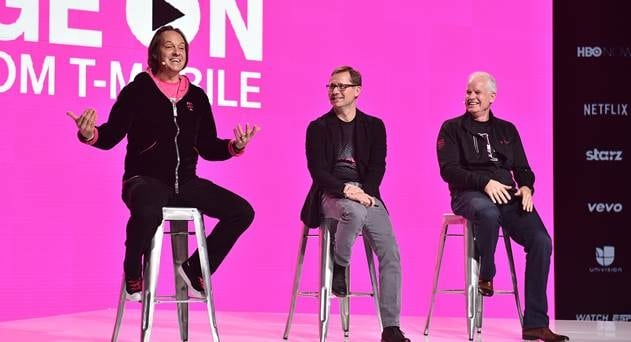T-Mobile's Binge On has some positive effects on the user experience, according to P3 Group. The global consulting, engineering and testing services company's 12-week crowdsource study* finds that, overall, customers are using video apps slightly more often and, once apps are launched, they are using them significantly longer than before.
Binge On allows customers to stretch their data buckets by streaming video from participating providers for free by automatically detecting all video and adjusting all streams for smaller/handheld devices resulting in DVD video quality of 480p or better. T-Mobile caps the average transmission speed of video content at around 1.5 Mbit/s.
P3's study of more than 1000 T-Mobile customers revealed that their usage was indeed much lower than the maximum bandwidth that would have been consumed if there were no adjustment to the video stream. The resulting effective data rate of popular video apps still achieves a level of about 60 percent or more of what was achieved before Binge On, although the bandwidth of the network is capped to a much smaller fraction of what the T-Mobile network is providing to non-video content.
The data shows that all types of apps that download video content are affected and it doesn't matter whether or not the content is streamed or downloaded. Video content embedded in a Web page, retrieved from social networks or simply downloaded is affected as well. Folowing are the other findings from the study;
- On average, customers spent up to 50 percent more time per session watching Netflix and Hulu; 16 percent longer on YouTube.
- The amount of data transmitted during a video session averaged over all Netflix, Hulu and YouTube sessions decreased by about 13 percent.
- The average instantaneous throughput by different apps was influenced by the mix of video and non-video content.
- While the average instantaneous throughput available to video apps dropped to just 29 to 54 percent of pre-Binge On levels, it did not necessarily lead to reduced video data rates as the video buffer is filled slower than before Binge On.
- Due to the mix of video and non-video content, the average instantaneous throughput of social media apps was reduced less (to about 50% to 80%) than for pure video apps.
Dirk Bernhardt, CEO of P3 Communications
Capping the bandwidth available for the transmission of video content allows T-Mobile to mitigate the risk of congestion in its network. It appears that T-Mobile has successfully managed to carry more video traffic, while avoiding a dramatic increase of the load on its network.
*The P3 report is based on real data collected across the United States and analyzed for the six weeks before and six weeks after the November 15, 2015 introduction of Binge On. The report draws on the daily smartphone usage of more than 1,000 T-Mobile customers who opted into P3's crowdsource panel by downloading P3's proprietary measurement software that records real, everyday smartphone use including the speed, duration and quality of voice and data usage on a 24/7 basis.




















